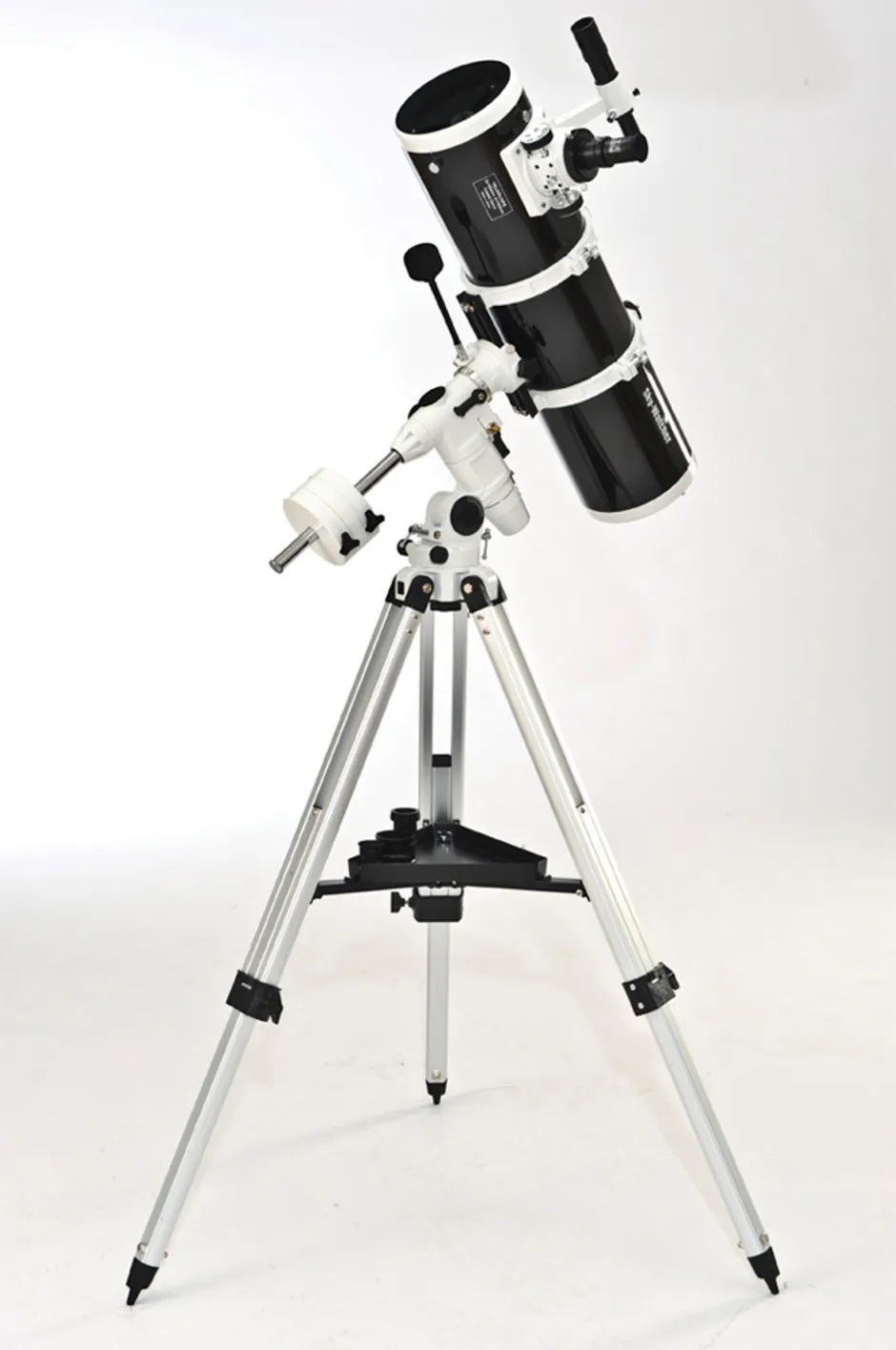The Sky-Watchern Explorer 150P with its EQ3-2 mount and aluminium tripod looks good in its black and white livery.It comes with a good quality 6x30 finderscope, two eyepieces – 25mm and 10mm – and a 2x Barlow that is threaded to accept a camera adaptor.
We found assembly and setup fairly straightforward, while the system was reasonably stable.
Vibrations dampened down quickly when the telescope was gently tapped.
This telescope has ‘fast’ optics: the focal length is short at 750mm, which gives a focal ratio of f/5.
The tube length is relatively short, which, along with this being a fairly lightweight system at 16kg, makes it quite portable.
The mount doesn’t include a polarscope, which can be added later, but for basic polar alignment you can look along the hole in the mount where the polarscope would go.
We found the slow-motion controls easy to use and there was only a slight amount of play in both axes when we fine-tuned the view on our targets.
Although small, the 6x30 finderscope gave clear views and helped us to locate most of our targets.

The range of eyepieces was good for this type of telescope, giving magnifications of 30x to 75x, which could be doubled with the 2x Barlow.
Using Capella to test the field of view, the star was sharp across 75 per cent of the view with the 25mm eyepiece; 75 to 85 per cent was acceptable, after which coma became apparent.
Wide-field views benefitted from this quality meaning that large objects such as M31, the Andromeda Galaxy, were enjoyable to observe.
Continuing with a tour of deep-sky targets, we split the double star Castor cleanly using the 10mm eyepiece, while the 25mm eyepiece hinted that the star was a double.
We also split the wonderful orange-yellow pair of Algieba in Leo.
The Pleiades star cluster benefitted from the wide view of the 25mm, filling the eyepiece with its bright stars, and with averted vision we could see the Merope Nebula hanging like a teardrop from its eponymous star.
Galaxy quest
The galaxies M81 and M82 were clearly visible with both the 25mm and 10mm eyepieces, the latter giving strong indications of mottling along its disc.
Sweeping south, the Orion Nebula was awash with detail; the 25mm’s wide view helped bring out the nebulosity, but at the expense of the Trapezium star cluster at the centre.
However, bumping up the magnification with the 10mm brought its four stars into view, and by adding the 2x Barlow into the mix, there was a hint of the other two stars with averted vision.
The ‘fast’ focal ratio meant that Jupiter appeared small using the 25mm eyepiece but the view improved with the 10mm and 2x Barlow with some nice detail.
The Moon exhibited lots of detail at all magnifications with good contrast along the terminator.
However, our overriding perception of the telescope was that it was particularly suited to deep-sky viewing, an area in which it performed very well.
Vital stats
Price: £239.00
Aperture: 150mm
Focal Length: 750mm; f/5
Eyepieces: 25mm, 10mm, 2x Barlow; 1.25-inch fit
Finderscope: 6x30, straight-through
Mount: EQ3-2
Weight: 16kg
Supplier: Optical Vision Ltd
Telephone: 01359 244200
Website:www.opticalvision.co.uk
